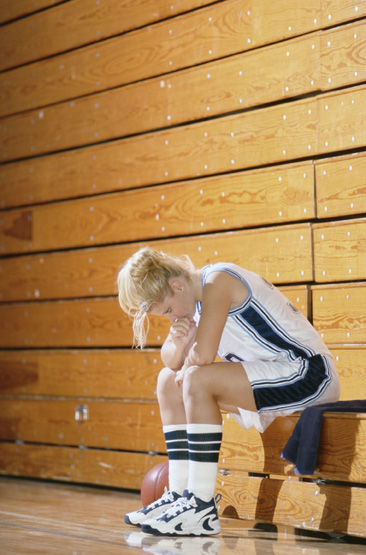 To help your child avoid sports injuries, the American Academy of
Orthopedic Surgeons, the National SAFE KIDS Campaign, and other sports
and health organizations offer the following safety tips:
To help your child avoid sports injuries, the American Academy of
Orthopedic Surgeons, the National SAFE KIDS Campaign, and other sports
and health organizations offer the following safety tips:
Make sure your child is healthy. Before your child starts playing basketball, she should get a complete sports physical, at which:
-
She should be tested for strength, flexibility and endurance.
-
Her overall health should be checked for conditions that might affect her ability to play basketball.
-
You should discuss with her pediatrician any injuries she may have suffered in the past.
-
You should alert the pediatrician to any relevant family medical history, especially heart-attacks in men under the age of 50, which could help the doctor spot potential heart problems, which, although rare, could be fatal.
Remember: be sure to tell your child's coach about important medical conditions she may have (asthma, diabetes, food or insect allergies etc.).
Make sure your child is in properly conditioned to play basketball.
-
Most conditioning-related injuries occur at the beginning of a season when kids are most likely to be out of shape
-
Many injuries can be prevented if your child follows a regular conditioning program before the season starts for the total body, including upper and lower extremities.
-
Encourage your child to train to get ready to play basketball, rather than expecting to get in shape simply by playing and practicing. A month before the season begins, he should run or engage in some kind of physical exercise one or twice a week. He should gradually increase the number of workouts to three or four times a week by the time team practices begin.
Make sure your child's coach is qualified. Insist on well-trained coaches. A youth basketball coach should know how to teach proper dribbling, passing, and shooting, position and set plays, be trained in first-aid and have an emergency medical plan in place for reaching medical personnel to treat injuries such as concussions, dislocations, elbow contusions, wrist, finger or ankle sprains and fractures.
Make sure that the coach has an emergency information card on your child and every other player. You should also ensure that a person certified in first aid and CPR is present at every game and practice who is ready to immediately respond to any injury, and that a first-aid kit with ice, as well as an automatic external defibrillator is on hand.
Buy your child a mouth guard and make sure she wears it. Mouth guards not only protect the teeth, but the lips, cheeks, and tongue and reduce the risk of such head and neck injuries as concussions and jaw fractures. For more about mouth guards, click here.
Sports injuries are no fun-make sure your child is wearing properly fitting basketball shoes. Basketball shoes should fit snugly, offer support, and have non-skid soles. Poorly fitted shoes, particularly those that allow movement side-to-side, are a major cause of injuries to the feet, knees, and ankles. Avoid hand-me downs that are likely to fit poorly, and may no longer provide adequate shock absorption. (Surprisingly, basketball shoes usually need replacement before the tread on the soles is worn out. For tips on how to know when athletic shoes are worn out, click here. Cotton socks absorb perspiration and also give added support to the foot.








